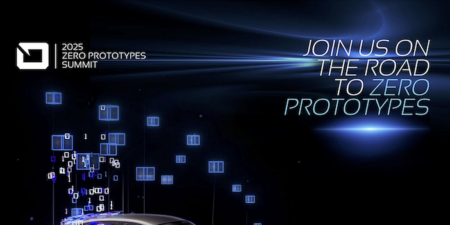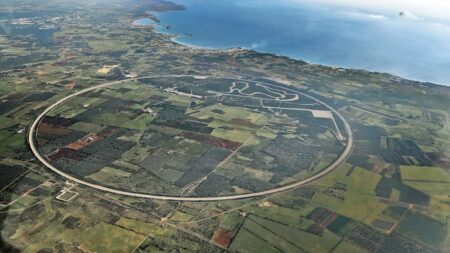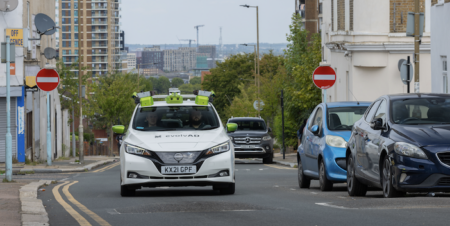Ferrari’s new flagship supercar, the SF90 Stradale, is unusual in many ways, being a V8 rather than the traditional V12 fitted to previous halo models, as well as being the marque’s first series production PHEV (plug-in hybrid electric vehicle) – and it also brings in several vehicle dynamics innovations. The name SF90 Stradale is a reference to Scuderia Ferrari’s 90th anniversary, and to mark the occasion this car is extreme on every level, with headline figures of 1,000cv, a weight-to-power ratio of 1.57kg/cv, and 390kg of downforce at 155mph (250km/h).
Ferrari’s engineers have fitted a 4WD system to help drivers exploit the full power of the hybrid powertrain, with the traction enabling impressive figures of 0-62mph (100km/h) in 2.5 sec and 0-124mph (200km/h) in just 6.7 seconds.
The SF90 Stradale is not just about straight-line power though, as Ferrari’s dynamics engineers have introduced a full-electric front axle, known as the RAC-e (electronic cornering set-up regulator). As well as exclusively providing propulsion in electric drive, the two front motors independently control the torque delivered to the two wheels, for a ‘torque vectoring’ effect. The RAC-e is integrated into the car’s vehicle dynamics controls, and by governing the distribution of torque, the car becomes easier to drive on the limit.
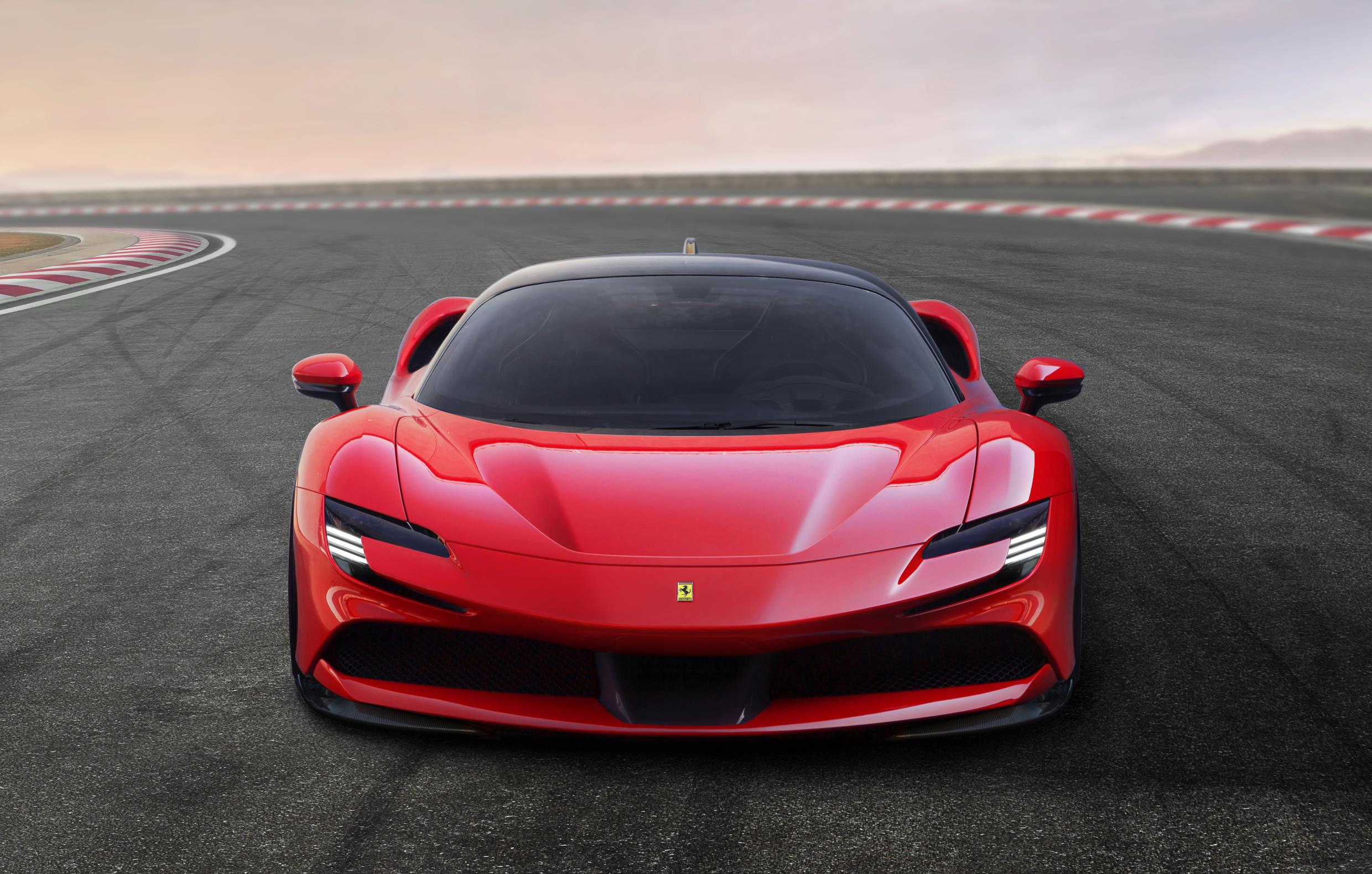
To ensure the SF90 stops as well as it goes, Ferrari’s brake cooling circuit design has been completely redesigned to cope with the demands of the car’s additional performance. Ferrari’s engineers collaborated with Brembo to develop a new caliper design for the front brakes, which is being used for the first time on a road car. The caliper has an integrated aerodynamic appendage, which distributes the highly charged air flow from the air intake – located directly under the headlights on the front bumpers – more efficiently to the brake pads and discs. The rear brakes are cooled by the flow from two air intakes located on the underbody near the rear wheels.
However, all these dynamics features, as well as the 270kg hybrid architecture, create a weight penalty. This weight has been offset by the all-new chassis and bodyshell, built using multi-material technology including carbon fibre, two new aluminium alloys (including a high-strength 7000 series alloy for some of the sheet metal), and the use of hollow castings instead of ribbed castings. The result is an overall vehicle weight of 1,570kg, and the design also brings benefits in terms of rigidity and centre of gravity, with the chassis boasting 20% higher bending stiffness and 40% higher torsional rigidity than previous Ferrari platforms. NVH (noise, vibration, harshness) characteristics have also been improved through the use of a new alloy known as ‘quiet aluminium’ for the floor pan.
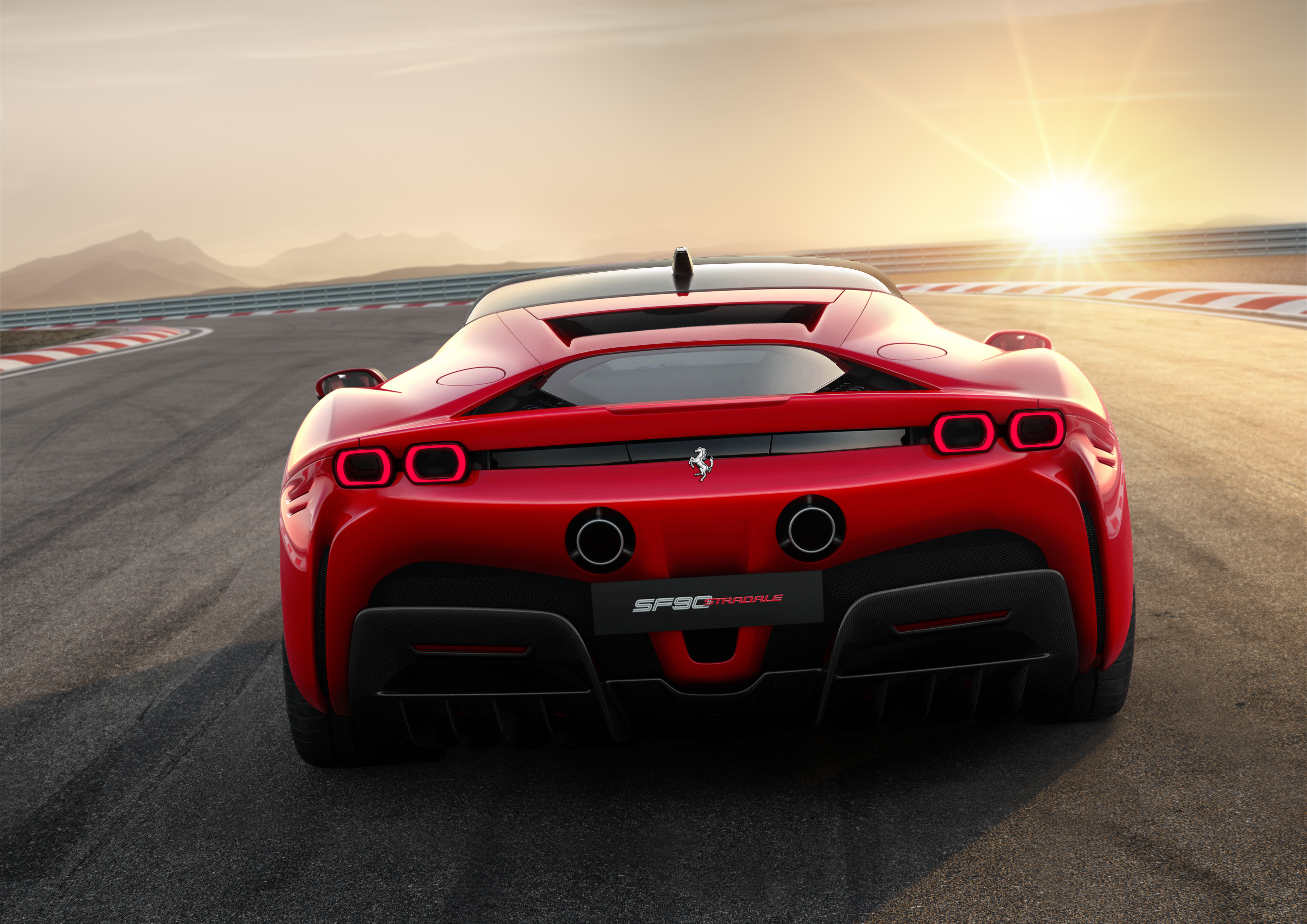
Electronic side slip control
The high-voltage system controls (battery, RAC-e, MGUK, inverter), engine and gearbox control, and vehicle dynamics controls (traction, braking, torque vectoring) have been integrated with Ferrari’s existing vehicle control logics, to create what the company has named the eSSC (electronic side slip control) vehicle control system.
The eSSC introduces three dynamic regulation and distribution strategies for sending engine torque to all four wheels:
- Electric Traction Control (eTC) optimally manages the availability of the torque – both ICE and electric – and distributes it it to the individual wheels to suit driving conditions and grip requirements
- The brake-by-wire control with ABS/EBD allows the braking torque to be split between the hydraulic system and the electric motors (brake torque blending), allowing regenerative recovery under braking, which Ferrari says boosts performance and brake feel rather than compromising them
- Torque Vectoring, which is available on the front axle to manage electric traction on the outside and inside wheel during cornering to maximise traction when exiting the corner
Not hardcore enough for you?
Buyers can choose between the ‘standard’ car and a version with a more sports-oriented specification named Assetto Fiorano. The sports specification boasts upgrades including GT racing-derived Multimatic shock absorbers, extra lightweight features made from high-performance materials such as carbon-fibre (door panels, underbody) and titanium (springs, entire exhaust line), resulting in a weight-saving of 30kg. Another difference is the high downforce carbon-fibre rear spoiler, which generates 390 kg of downforce at 155mph (250km/h). The specification also includes Michelin Pilot Sport Cup2 tyres designed to improve performance on the track in the dry through a soft compound with few grooves.
Technical specifications
Internal combustion engine
90° turbocharged V8 with dry sump
Total displacement: 3990cc
Maximum power output: 574kW (780cv) @ 7,500rpm
Max torque: 800Nm @ 6,000rpm
Specific power output: 195cv/l
Max. engine speed: 8,000rpm
Compression ratio: 9.5:1
Hybrid system
Maximum power of electric motors: 162kW (220cv)
Battery capacity: 7.9kWh
Max. range under electric power: 15.5 miles (25km)
Dimensions and weight
Length: 4,710mm
Width: 1,972mm
Height: 1,186mm
Wheelbase: 2,650mm
Front track: 1,679mm
Rear track: 1,652mm
Dry weight: 1,570kg
Weight distribution: 45% front, 55% rear
Boot capacity: 74 l
Rear shelf capacity: 20 l
Fuel tank capacity: 68 l (2 reserve)
Tyres
Front: 255/35 ZR 20 J9.5
Rear: 315/30 ZR 20 J11.5
Brakes
Front: 398 x 223 x 38mm
Rear: 360 x 233 x 32mm
Transmission and gearbox
8-speed, F1 dual-clutch transmission
Electronic controls
eSSC: E4WD (eTC, eDiff3), SCME-Frs, FDE2.0, EPS, high performance ABS/EBD with energy recovery
Performance
Maximum speed: 211mph (340km/h)
0-62mph (100km/h): 2.5s
0-124mph (200km/h): 6.7s
62mph (100km/h)-0: <29.5m
Dry weight/power: 1.57kg/cv
Lap time at Fiorano: 79s



